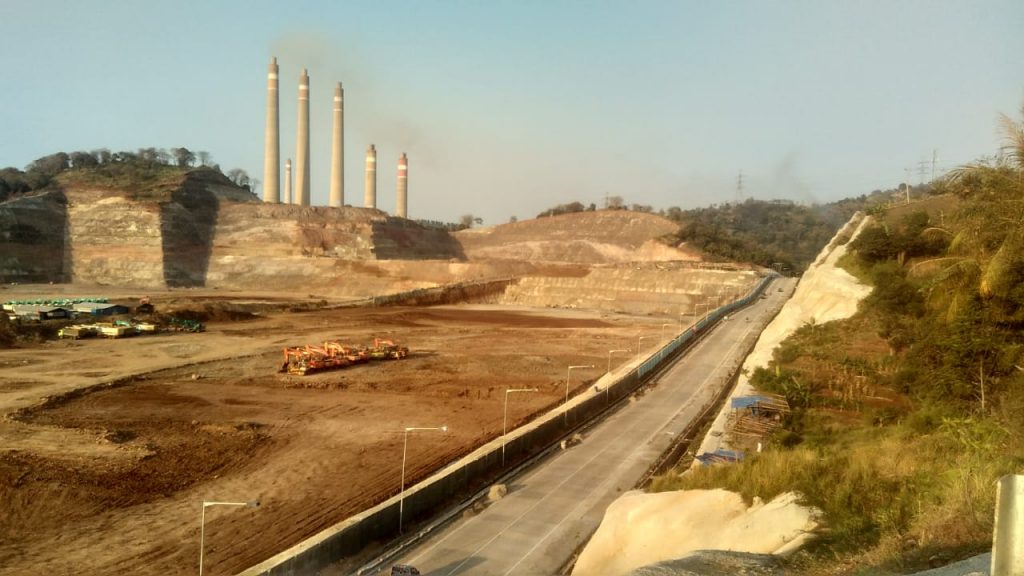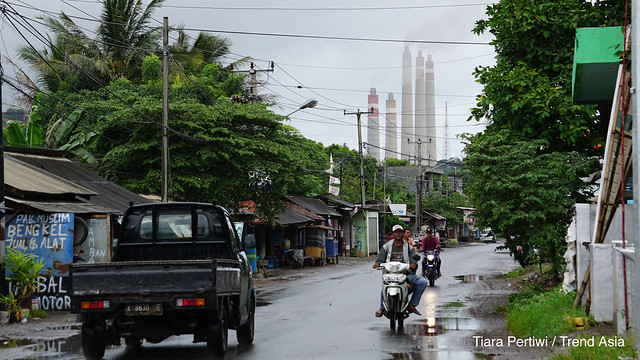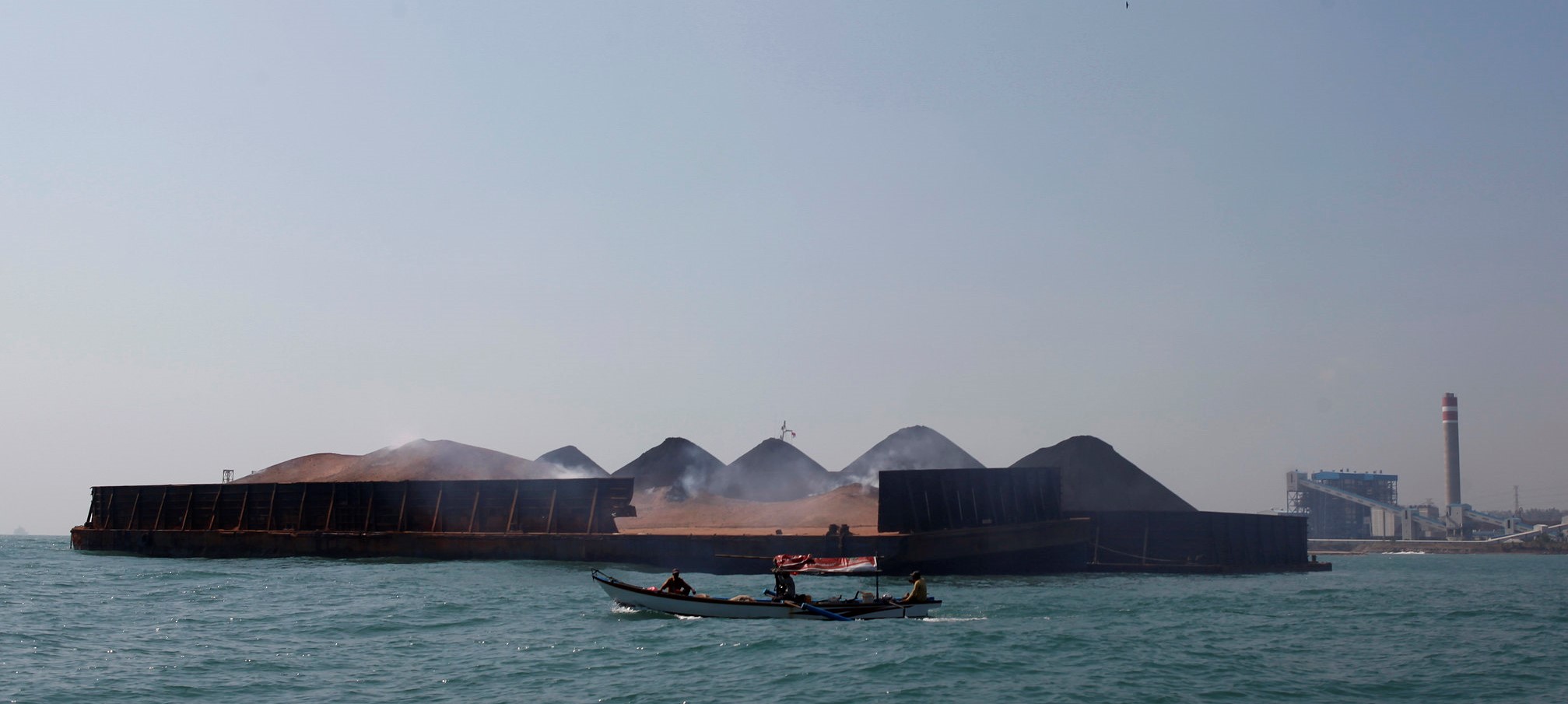ARCHIVED CONTENT
This content is no longer being updated.
Get out of Jawa 9 and 10!
Southeast Asia needs clean energy not more polluting coal power.
Serious concerns exist about banks’ finance to Jawa 9 and 10 (Banten Suralaya), a 2,000 MW coal-fired power project in Banten province in Indonesia.
On July 17, 2020, a syndicate of banks signed a loan agreement regarding this project. Here are our comments regarding this decision.
Given the reputational, legal and environmental risks associated with Jawa 9 and 10, corporations associated, such as DBS, Korean public banks, Malaysian and Indonesian banks should distance themselves from it.
A report modeling the health impacts of the project found that Jawa 9 and 10 will cause 4,700 premature deaths over its lifetime.

Banten Suralaya, September 2018
This 2,000 MW project is expected to use ultrasupercritical technology.
Location: Banten Province
Estimated cost: USD $3.5 billion
Status: Announced
Completion expected: 2024
Take action!
Urge DBS to become a clean energy leader and withdraw from Jawa 9 and 10
Who’s involved?
Sponsors
- Indonesia Power (Indonesia’s state utility – PLN Subsidiary) 51%
- Barito Pacific 34%
- Korea Electric Power Company (KEPCO) 15%
- Special Purpose Vehicle: PT Indo Raya Tenaga
Advisors
- Financial: DBS
- Legal – Sponsors: Shearman & Sterling
Lenders
- DBS
- Export Import Bank of Korea (KEXIM)
- K-sure
- Korea Development Bank
- Hana Bank of South Korea
- Bank Mandiri
- Bank Negara Indonesia
- Exim Bank of Indonesia
- Maybank
- CIMB
- Bank of China
EPC
- Doosan Heavy Industries and Hutama Karya
- Siemens (Control system)
Risks associated with the project
Community concerns and legal challenges
Jawa 9 and 10 form a part of a legal action in Indonesia. In July 2019, a civil suit was filed against the President, the governor of Jakarta and other officials for failing to address air pollution levels in Jakarta. Pending projects such as Jawa 9 and 10 have been cited as part of the problem.
A 2017 Greenpeace report models the negative impact of the coal-fired power plants that operate within 100 kilometres of Jakarta, and include the impact of pending projects.
The area around the project is an industrial area with several coal power projects:
- 660 MW Banten Serang supercritical coal power project
- 600 MW Banten Labuan coal power project
- 945 MW Banten Lontar subcritical coal power project
- 120 MW Merak Energi coal power project
- 200 MW PT Krakatau Posco Energy coal power project
- 400 MW PT Krakatau Daya Listrik coal power project
- 300 MW PT Dian Swastika Sentosa coal power project
- 40 MW Cilegon PTIP power station to power the Indorama petrochemical plant
- 300 MW Asahimas Chemical coal power project
- 1,982 MW Jawa 7 supercritical coal power plant (projected in service in 2020)
The issues with these projects will only be exacerbated by Jawa 9 and 10.

Banten Suralaya, March 2019; photo credit: Trend Asia
Wasted electricity, wasted investment
If built, Jawa 9 and 10 will do little to help the average Indonesian get access to electricity and will lead to wasted electrical capacity.
The Jawa-Bali grid, where this project is located, already has some of the highest rates of electrification in the country (99.99%).This has raised questions about whether extra power stations are needed.
According to the latest energy plan (RUPTL), the current reserve margin (excess capacity as a percentage of expected peak demand) in the Jawa-Bali grid is 28%.Although the Jawa-Bali grid is required to meet 80% of the Indonesian demand for power, around 40% of the electricity produced was not being used, according to statements by PLN’s CEO in November 2017.
So Jawa 9 and 10 could be producing electricity that would go largely unused.
PLN’s poor financial health
It’s also clear that this overcapacity could significantly harm PLN’s already poor financial health.
Because of the take-or-pay clauses in power purchase contracts, PLN has been criticised as potentially paying for unnecessary electricity. Even more farcical, as renewable energy becomes cheaper than coal power, (which the Carbon Tracker initiative estimates could happen for solar in Indonesia in less than 10 years) PLN faces the prospect of having to make these astronomical payments to coal power projects although the power sourced from them is more expensive.
PLN is facing financial pressure, even now. In April 2018, the Institute for Energy Economics and Financial Analysis released a further report showing that without government subsidies, PLN would have lost US$2.3 billion in 2016 and US$1.47 billion in 2017.
PLN’s financial viability has serious consequences for the Indonesian state budget.
Negative effect of the Indonesian Rupiah crisis
The weakness of the Indonesian currency also has prompted concerns about the viability of these planned coal projects.
In September 2018, the Indonesian government planned to delay approximately 15GW of coal power projects because of its widening current account deficit. Jawa 9 and 10 were originally slated to be part of this delay. It is unclear whether the project completion date has been shifted as a result.
Coal power, PLN and corruption in Indonesia
Coal power projects in Indonesia have been recently implicated in corruption.
As stated by Global Witness campaigner Adam McGibbon, “Not only is coal increasingly risky, climate-destroying and bad for air pollution, there is now a huge and underestimated corruption risk.“
In May 2019, Hyundai Engineering & Construction admitted to bribing an Indonesian politician in relation to the Cirebon coal-fired power plant construction project in West Java.
In July 2018, the Indonesian Corruption Eradication Commission (KPK) arrested Eni Mulani Saragih (Eni), the deputy chair of the House of Representatives (DPR) Energy Commission and Johanes Bidisutrisno Kotjo (Kotjo). Eni was alleged to have received IDR$4.8 billion from Kotjo, to facilitate a company in which Kotjo was a shareholder to become the sponsor of a coal power project in Indonesia.

Coal barge on fire off the coast of Banten Suralaya, March 2019; Photo credit: Trend Asia
Risks associated with the project
Given these concerns, DBS, as well as Korean public institutions, and Malaysian and Indonesian banks, lending to this project should be considering the risks of Jawa 9 and 10 as an investment. Investors in the banks or sponsors of Jawa 9 and 10 should similarly be questioning these companies about the risks inherent in this project.
